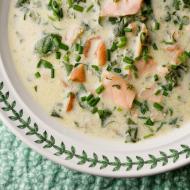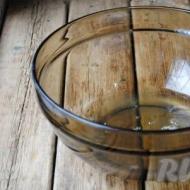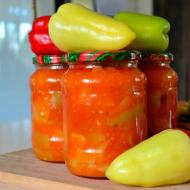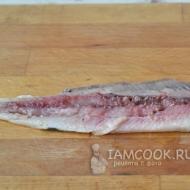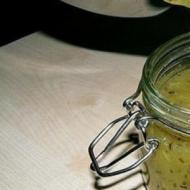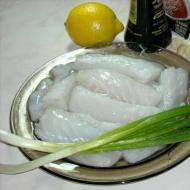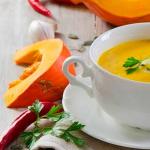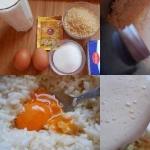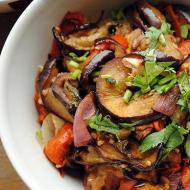
Practical tips: how to fry in a frying pan without oil? How to stew vegetables in a frying pan for a diet
Vegetables are one of the most healthy foods. They can be used both as a side dish and as a main dish. They are prepared in different ways. For example, you can consider the option of stewing vegetables in a frying pan. There are many secrets and subtleties in this matter that you need to know in advance so that the finished dish turns out to be as tasty and healthy as possible.
Unique method
To begin with, it should be noted that stewing is a procedure that is something between boiling and frying. In essence, two fundamentally different processes are combined here. In the first case, the products are subjected to heat treatment in water, and in the second - in the presence of fat. This partly explains how to stew vegetables in a frying pan. In addition, it is necessary to take into account that the process must take place under a closed lid. This enhances the thermal effect and allows you to achieve the desired result in a relatively short time. When figuring out how to stew vegetables in a frying pan, you must first of all pay attention to the fact that such work requires very specific utensils. It should be deep enough so that not only the food itself, but also a small amount of water and some fat can fit inside.
When figuring out how to stew vegetables in a frying pan, you should also know that this process, in addition to the classic version, has several more varieties:
- Languor. Processing takes place over low heat for a long time.
- Allowance. The products are stewed for just a few minutes in a small amount of water.
- "Confit". In this case, the main processing medium is oil.
Any of these options can be done in a frying pan. It all depends on what result you ultimately need to get.
Practical use
Stewed food is consumed by people who try to lead a healthy lifestyle. After all, this processing method allows you to preserve as much as possible the beneficial substances contained in the products. One of the main factors in this process is time. It is known, for example, that many vitamins are gradually destroyed during heat treatment. This means that every extra minute of boiling has a detrimental effect on the finished dish. This is especially true for vegetables. People have long appreciated their benefits. Take eggplants, for example. Humanity learned about their existence more than a thousand years ago. During this time, the vegetable was carefully studied. Scientists have found that eating it allows you to:
- increase the level of red blood cells and hemoglobin in the blood;
- improve kidney and liver function;
- stimulate the functioning of the stomach and intestines, preventing the formation of constipation.

To preserve these unique properties in the finished dish, you need to know in advance how long to stew the eggplants. Of course, you should not exclude other types of processing (frying, canning, etc.). But, according to experts, it is stewed foods that bring the maximum benefit. There are a huge number of recipes that will help turn an ordinary purple fruit into a real feast of taste. If we talk about how much, the temperature at which heat treatment occurs plays an important role. If food is being cooked on the stove, the boiling should be barely noticeable. It is necessary to create conditions so that the vegetables practically simmer in a small amount of liquid. In this case, the temperature must be maintained no higher than 82 degrees. On medium heat this will take 10-15 minutes, and on low heat - no more than half an hour. In the oven the conditions are slightly different. There the temperature can reach 170 degrees, but the time frame remains the same.
General rules
When choosing stewing as the main method of cooking, you need to understand how long to stew vegetables so that they are not only tasty, but also remain healthy. Any housewife knows that the product is considered ready when it reaches a certain degree of softness. This means that it can already be eaten. You shouldn’t wait until the aromatic pieces turn into a multi-colored “mash”. This will not make them any healthier or tastier.

In addition, the temperature treatment time depends on the density of the fabrics. As you know, carrots and onions take the longest to stew. Next on the list are potatoes, cabbage, zucchini and eggplant. The average time period is from 10 to 30 minutes. In some cases, to speed up the cooking process, a combined method is used, when the products are lightly fried beforehand and then stewed in the presence of a small amount of moisture. Among other things, this technique allows you to make food more flavorful.

This is a fairly popular dish, for the preparation of which you may need:
4 potatoes, 1 carrot, salt, 6 tomatoes, 200 grams of cabbage, pepper, onion, 2 cloves of garlic, 250 grams of zucchini and a little vegetable oil.
In this case, the following procedure should be followed:
- First you need to chop the vegetables. To do this, cabbage, zucchini, tomatoes and potatoes should be cut into cubes, onions into rings, and carrots should be grated using a grater with large holes. You can simply chop the garlic with a knife. The food pieces should be approximately the same size.
- Now some of the vegetables need to be placed in the frying pan. This must be done in the following order: potatoes - cabbage - carrots.
- Pour water over them and simmer for 5 minutes at low boil. The liquid should cover only the very bottom layer.
- Add tomatoes, zucchini, a little salt, water and continue processing for another 3 minutes.
- Lightly fry the onion separately in oil, then add to the vegetables and simmer until fully cooked.
- Turn off the heat, add garlic, stir and cover with a lid. In this state, the products should stand for 6-7 minutes.
After this, you can safely serve them to the table.
In chapter Second courses to the question How to stew vegetables deliciously without vegetable oil? given by the author Natalia Zubanova the best answer is
Recipe “Vegetable stew in the sleeve”
cut all the vegetables: tomatoes, bell peppers, onions, potatoes, eggplants, carrots, cabbage (whatever is in the refrigerator), garlic, lamb or beef into pieces. Next, add salt, pepper, cumin, cilantro or any seasoning for meat. You can also add a little white wine. Mix everything and let it stand for 1 hour. For a diet or lenten menu, you can omit meat. Put everything in a sleeve, release the air (so that the bag does not burst when the air expands), close it and put it in the oven for 1.5 hours at 170 degrees (it will be with broth) or 180-190 degrees (it will be a little dry). Once ready, cut the bag, lay it out, and sprinkle fresh herbs on top.
you can simply use different spices, soy sauce, tomato paste
Stew in honey. (chicken wings)
with soy sauce and a spoonful of low-fat sour cream it will be a very tasty stew
No, I am radically kind today. I explain something smart or useful, yes... So, stewing is a heat treatment in a combination of liquids and fat, and there are much more liquids. Therefore, if the question is to avoid oil altogether, then you will not be able to stew the vegetables. You blanch or boil them, but don’t stew them in any way. And if you don’t need vegetable oil, then use butter or animal fat.
In its own juice. on a small flame, adding greens and a little garlic at the end.)
But I wouldn’t refuse butter. It helps in the absorption of many very useful vitamins from vegetables. For example, carrots are useless without fat components. The vitamin is fat-soluble. Just choose tasty and natural sunflower oil
How to stew vegetables without oil - How to deliciously stew vegetables without vegetable oil? 2 answers
There are 2 ANSWERS on the site to the question How to sauté vegetables deliciously without vegetable oil? you will find 8 answers. The best answer about how to stew vegetables without oil was given on April 04 by Natalia Zubanova.
Stewed vegetables without oil

How to prepare the dish “Stewed vegetables without oil”
- Wash and peel all vegetables.
- Cut the onion into half rings and the zucchini into cubes.
- Then place the vegetables in layers in a pan with thick walls in the following sequence: onions, carrots, zucchini.
- Cut the tomatoes into slices and add to the vegetables.
- Pour water, salt, add tomato juice.
- Simmer over low heat for 30 minutes.
- Onions – 1/2 pcs.
- Zucchini – 1/2 pcs.
- Tomato – 1 pc.
- Tomato sauce – 1 tbsp.
- Water – 200 ml.
- Salt – 2 gr.
Nutritional value of the dish “Stewed vegetables without oil” (per 100 grams):
Ingredients and calorie content of the recipe “Stewed vegetables without oil”
(calorie content and nutritional value are calculated approximately, excluding boiling and frying)
This is a custom recipe, so there may be errors and typos. If you find them, please write them in the comments below the recipe and we will correct them.
Step-by-step recipes with photos from our website are in the “Recipes” section.
Stewed vegetables without oil - calorie content, composition, description
Stewed vegetables without oil How to prepare the dish “Stewed vegetables without oil” Wash and peel all vegetables. Cut the onion into half rings and the zucchini into cubes. Then lay it out in layers
How to cook vegetable stew without oil
It is not necessary to add oil to vegetable stew. You can cook without any oil at all. In fact, butter (which is not healthy at all) usually adds fat and calories to a dish.
Nutritionist Julianne Heaver says: “Contrary to popular belief, butter is not a health food. Butter is 100 percent fat, with 120 calories per teaspoon of butter, which is low in nutrients but high in calories. Although some oils contain nutrients in small quantities, they provide no real benefit. Reducing or eliminating oil intake is an easy way to reduce your calorie and fat intake." Thus, it is better to cook vegetable stew without oil if possible.
1. Buy or make a good vegetable broth.
Instead of adding vegetables directly to the pan, add water or vegetable broth first. The problem is that you need to prepare it and buy it in advance, but since you are buying butter anyway, this will not cause you any extra hassle.
Making broth isn't very difficult - you can find a great low-sodium broth recipe, and then you're ready to make vegetable stew without oil. Don't feel like you're wasting your time and money! Vegetable broth can be used in soups, sauteed vegetables, and can even be frozen into cubes for later use.
2. Find a non-stick frying pan or wok.
Since oil lubricates the pan and prevents food from burning, skipping it can cause some inconvenience. If you don't already have a good non-stick frying pan, it's worth buying one.
Don't feel like you'll never use it or that you're wasting money on extra kitchen utensils because this frying pan will last you a very long time if you take good care of it and it's very multi-functional. Whatever brand you choose, make sure that the coating is not made from very harmful materials (choose an environmentally friendly coating if possible), and be sure to wash the pan by hand so as not to scratch the coating.
3. First, heat the pan.
Before adding vegetables, preheat the frying pan/wok over medium heat. To make sure the pan is hot enough, add a little water and see if it evaporates. If yes, the pan is ready.
Add about ¼ cup (or more) of vegetable broth or water, then add garlic, onions and carrots, and other vegetables and simmer briefly. After 10-20 minutes, add green leafy vegetables, green beans or any other vegetables you like. Add some reduced sodium soy sauce, ginger or Chinese 5 Spice for a great stir fry!
Don't rely heavily on oil; it doesn't have to be used in frying or baking. In addition, giving up oil allows you to better reveal the taste of vegetables. Next time, try using these tips for a delicious, flavorful vegetable stew!
How to cook vegetable stew without oil
It is not necessary to add oil to vegetable stew. You can cook without any oil at all. In fact, butter (which is not healthy at all) usually adds fat and calories to a dish.
What is the best way to stew food, in water or in oil, which is healthier?
Firstly, what kind of oil is butter, vegetable or corn. In any case, fried oil is harmful, so of course on water.
To understand what is healthier, you need to understand what stewed food is.
Stewed food is a compromise between boiled and fried food. This food is healthier than fried food, but less healthy than boiled food. Why?
Boiling is considered the healthiest way to prepare food, because the water in the pan does not rise above 100 C, so substances harmful to the body are not formed in it, and boiled foods are low-fat and do not contain cholesterol. This is why boiled food is considered a dietary and healthy food.
Fried food is the most dangerous. When we fry, in any oil, the temperature in the frying pan rises above 200 C, the oil boils and carcinogens are formed in it. In addition, everyone’s favorite crispy crust is a very dangerous clot of carcinogens.
Stewing food always occurs in the presence of water or broth, thanks to this, the temperature does not rise above 100 C. As a result, no carcinogenic or harmful substances are formed. Therefore, stewed food remains safe and healthy.

When stewing, keep the following ratio: 1 glass of water or broth per 1 kg. fish or meat. If your food seems bland without oil, it is best to add 1 tablespoon of it to already cooked food, avoiding heating it. This kind of stew will actually bring benefits and not harm.
What is the best way to stew food, in water or in oil, which is healthier?
Firstly, what kind of oil is butter, vegetable or corn. In any case, fried oil is harmful, so of course on water.
How to properly stew vegetables
Stewed vegetables are a dish known to everyone. To add an exquisite taste to simple dishes, you can stew vegetables in unique signature sauces with the addition of various spices. It is in stewed dishes that a real cook can demonstrate all his skills, revealing the unique taste of each vegetable or balancing all vegetable flavors.
What are the benefits of stewed vegetables?
Stewing is one of the types of heat treatment of foods, which is used in the preparation of regular and dietary dishes.
The main advantages of cooking vegetables using stewing:
- Minimal or no fat. Usually vegetables are stewed in their own juice or with the addition of a small amount of broth. Therefore, stewed vegetable dishes contain practically no vegetable and animal fats compared to fried ones. When fried, vegetables absorb large amounts of fat.
- Stewed vegetable dishes always turn out juicy and flavorful. Boiled and steamed vegetables don't always have the richest flavor, and fried foods often turn out a little dry and require additional sauces.
- Preservation of the maximum amount of nutrients. When vegetables are stewed, a rich broth is formed, which evaporates only a little. Unlike cooking vegetables, the resulting broth is not drained before serving the dish.
But, like other cooking technologies, stewing also has some disadvantages:
- Loss of vitamins. With any heat treatment, vegetables lose some of their vitamins, micro- and macroelements. During short-term stewing, the beneficial nutritional composition of vegetables remains virtually unchanged, but during prolonged stewing, the beneficial substances decompose, leaving only carbohydrates and fiber in the vegetables.
- To enhance the flavor, vegetables are often fried before stewing, which leads to an increase in fat in the finished dish and high calorie content.
What vegetables can be stewed and in what ways?
You can stew almost all vegetables of the vegetative and fruit groups.
The first group includes: potatoes, carrots, beets, sweet potatoes, celery root, onions and leeks, sorrel. Cabbage: white cabbage, Brussels sprouts, cauliflower, broccoli. Enhance the taste of stewed dishes with herbs such as dill, parsley, savory, basil, lemon balm or mint.
Fruit vegetables suitable for stewing: all types of tomatoes, eggplants, peppers, pumpkin, zucchini, zucchini, fresh green peas. Many stews also contain beans or legumes, but their cooking time until fully cooked is too long compared to vegetables. Therefore, they are added ready-made.
Methods for stewing vegetables
You can prepare stews using various utensils and cooking methods. This can be an open fire, cooking on an electric or gas stove, or baking in the oven.
Depending on the cooking method, vegetables are stewed in a frying pan, cast iron and ceramic dishes, clay pots, or in a slow cooker.
Pros and cons of each cooking method
Stewing in a frying pan usually used for preparing small portions and after pre-frying vegetables.
Pros: the vegetables turn out juicy and cook quickly.
Cons: the dish may burn, you need to monitor the evaporation of the liquid.
When cooking over an open fire It is more advisable to use cast iron cauldrons with a lid and thick walls.
Pros: In such dishes, vegetables will not burn, they will retain their juiciness and acquire a unique taste.
Cons: Cooking takes a long time and requires a lot of attention.
For preparing stewed vegetables in the oven use cast iron molds and ceramic dishes. Dishes are baked in small clay pots in portions.
Pros: in such dishes, vegetables acquire a rich taste and aroma, and when served they look appetizing and original.
Disadvantages: dishes take a long time to simmer; liquid must be added during cooking.
Multicooker– one of the best helpers when preparing a delicious stewed vegetable dish.
Pros: Minimal time investment, complete lack of control. With this kind of stewing, vegetables are quickly cooked, juicy with a rich taste and aroma.
Cons: Some vegetables lose their vibrant color.
Regardless of the preparation, when serving the dish, you can garnish it with fresh herbs or top it with your favorite sauce.
Delicious stewed vegetables
By stewing vegetables, you can prepare both simple side dishes and complex independent dishes. To prepare simple dishes, use one type of vegetable or combine vegetables, which are stewed until fully cooked in the same amount of time. Usually all the components of such a vegetable platter are prepared at the same time. Often such dishes are included in the diet menu.
Complex dishes include stews, vegetables stewed with meat, mushrooms and fish. They are prepared in several stages. Each component product requires preliminary preparation: boiling, pickling, stewing or frying. All ingredients are mixed in a semi-finished state and brought to readiness in any convenient way. These dishes have a richer taste and appetizing appearance and higher calorie content.
Stewed vegetables - delicious recipes
Broccoli casserole with fish
- broccoli 350 g,
- potatoes 3 pcs,
- cream 170 g,
- chicken egg 3 pcs,
- fresh red fish,
- hard cheese 100 g,
- nutmeg 5 g.
Preparation: divide the cabbage into inflorescences and boil for three minutes in salted water, boil the potatoes in their skins until half cooked, combine the eggs with cream, salt and nutmeg, and beat with a whisk. Peel the potatoes, cut into large rings, place in a baking dish, lay the cabbage on top, pour in the egg mixture. Bake in the oven at 200˚C for 20 minutes. Sprinkle the hot dish with cheese. Serve in portions hot or cold.
Vegetable sauté with mushrooms
- Bulgarian pepper,
- eggplants,
- zucchini,
- carrot,
- pepper,
- tomatoes. All vegetables 250 g.
- Champignon mushrooms 300 g.
- Garlic 3 cloves,
- salt,
- vegetable oil 70 g,
- water or broth 200 ml.
Preparation: cut the vegetables and mushrooms into rings 5mm thick, salt the blue ones with 1 teaspoon of salt and set aside for half an hour, then rinse and dry with a paper towel. Fry mushrooms and vegetables one by one until golden brown and place in a cauldron. Pour in broth. Bring to a boil and cook over low heat until tender, about 20 minutes. At the end of cooking, add garlic. Serve in portions, garnished with herbs.
Stewing is one of the favorite cooking methods not only of professional chefs, but also of novice cooks because vegetable stews are very difficult to spoil. Even the most unexpected combinations of ingredients result in mouth-watering dishes with an original taste.
How to stew vegetables correctly - Vegetables, herbs, Recipes, tips, descriptions, reviews
Stewed vegetables are a dish known to everyone. To add an exquisite taste to simple dishes, you can stew vegetables in unique signature sauces with the addition of various spices. It is in stewed dishes that a real cook can demonstrate all his skills, revealing the unique taste of each vegetable or balancing all vegetable flavors. Content:
In Russian national cuisine there are many ways of cooking: food is boiled, stewed, baked, fried, poached. Almost all of these methods do not require the addition of oil. Even frying food has long been possible without it: all thanks to cookware with non-stick coating.
Why do many housewives still add vegetable oil or butter everywhere? “It enhances the taste of the dish; fatty foods seem to taste better to us.”, - explains Daria Rusakova, candidate of medical sciences, researcher at the clinic of the Federal State Budgetary Institution "Research Institute of Nutrition", scientific consultant at the clinic "Nutrition and Health".
As we know, fats play an important role in the formation of hormones and the absorption of vitamins. They make up the cell membrane, and without fats, oxygen exchange in the lungs would be impossible. Therefore, of course, you should not completely exclude oil from your diet. “It will be more useful to add it to the finished dish. The way we usually fill it up. When heated, oils lose their beneficial properties and even become carcinogenic.”, - recommends Daria Rusakova.
If you regularly eat fish, meat, poultry, dairy products and nuts, your body will get all the necessary fats from these foods. So don't be afraid of a deficiency of an important nutrient. The habit of cooking without adding oils will be useful not only for people with cardiovascular diseases, atherosclerosis and excess weight, but also for those who can boast of good health. Here are some popular ways to cook without oil.
Stew in a ceramic pot
This cookware is cheap, safe to use, and the resulting dishes are to die for! You can cook meat, vegetables, desserts, and soups in pots. Meat, poultry and fish provide juice and natural fat that does not boil away - this eliminates the need to add oil. Vegetables that are not very juicy can be diluted with water. Ceramics does not tolerate temperature changes, so make sure that these dishes are heated and cooled gradually: otherwise cracks will appear.
Use silicone molds
Bake in foil or sleeve
The principle of preparing dishes in foil and a plastic sleeve is approximately the same: wrap the food and bake it. True, the plastic sleeve is more airtight, so meat, poultry or fish cooks faster in it than in foil. But it also has an advantage: it can withstand higher temperatures. The main thing is to ensure that the matte surface of the foil is on the outside and that it interacts with the hot air of the oven. There is no need for oil, because meat products release natural juices that will saturate the side dish. The dish will turn out juicy provided that you pack it securely in foil or a sleeve.
For people who monitor their health, it is very important not to use vegetable and natural fats when cooking.
In this article we will look at ways to fry without oil in a frying pan, and also learn how to choose the right kitchen utensils for cooking lean food. Thanks to this accessible knowledge, you will be able to please your household with delicious low-fat dishes prepared with your own hands.
For frying in a pan, most housewives use butter or vegetable oil. However, few people think about the consequences that arise from regular consumption of such food.
An increased content of carcinogens due to disruption of intracellular metabolism can provoke the development of cancer!
To avoid the harmful effects of vegetable and animal fats, it is necessary to avoid using them during frying.
Rules for choosing utensils for preparing vegetables and other dishes
Let's figure out how to fry without oil in a regular frying pan. Before you begin the cooking process, it is worth inspecting the kitchen utensils. For frying without oil, pans with a thick bottom are suitable. The material from which the frying pan is made does not matter at all, because the thick walls of the pan contribute to frying food in its own juices.

In addition, pay attention to the lid. It should fit tightly and not let moisture out of the pan. Thanks to the large volume of liquid, the dish will stew on its own. This oil-free cooking technology is ideal for vegetables, because they contain a large amount of moisture.
Cooking without oil in a frying pan using parchment
There is another equally practical and useful way of making delicious dishes without oil; it is based on the use of parchment. For it you will need high-quality material, preferably white.

You need to cut a circle out of paper in the shape of a frying pan and line the bottom with it. Carefully place the foods that need to be fried on top. The parchment may bulge, but after laying out all the ingredients, under their weight, it will bend and completely cover the surface of the pan.
Under the influence of high temperature, the dish will not shrink, as when frying in oil. Thus, cutlets, meat and fish are excellent.
Cooking on parchment is suitable for those who adhere to a diet and proper nutrition, as well as people who fast.
Which frying pan to choose for frying without oil
Nowadays special frying pans for frying without oil are gaining great popularity.

Let's take a closer look at their types:
- Ceramic frying pan - suitable for frying foods with a high fat content. You can cook meat and vegetables on it, but as a result of cooking you will not get an appetizing crust.
- Grilling is a great option for cooking meat. Since most frying pans are made of cast iron, the liquid does not evaporate from it, which makes it possible for the meat to be saturated with its own juices.
- Teflon frying pan is the most current model of frying pan for preparing healthy food. However, this cookware has a significant drawback - it requires careful care. If scratches or other damage occurs, the frying pan loses its properties.
Taking into account all the above tips, we can conclude that frying without oil in a frying pan is possible, and even necessary. Cooking food this way will improve your health, help you reduce the number of calories you eat per day, and at the same time add variety to your diet.
Vegetables form the basis of proper nutrition. They are eaten raw and also added to salads, first and second courses. Today you will learn how to cook stewed vegetables in several ways - in the oven, in a slow cooker and in a regular frying pan.
general information
Many people consider stewed vegetables to be a boring and monotonous dish. But that's not true. For those who are on a diet and adhere to a healthy diet, garden gifts prepared in this way will be an ideal option in the daily menu. We offer you simple recipes that do not require a lot of time and money. To prepare tasty and low-calorie dishes, you can use seasonal summer vegetables or purchase a winter set of cabbage, carrots and potatoes. Modern refrigerators equipped with powerful freezers will keep food fresh.
Grocery list:

How to prepare stewed vegetables in a slow cooker? Everything is extremely simple:
1. We start by processing the potatoes. We peel the root vegetable and cut it into cubes, then place it in the multicooker bowl. Now let's take the carrots. We need to peel it, wash it thoroughly and chop it (cut into strips or cubes). Add to potatoes.
2. Let's start chopping the peeled onion. It is best if it is cut into half rings. Add onions to other vegetables.
3. One of the main ingredients of the dish is cabbage. Place half the head of cabbage on a cutting board and cut into cubes. Place the chopped cabbage in a slow cooker.
4. Pour in a glass of water. Salt and add your favorite spices. Mix all ingredients thoroughly with a special spatula. All that remains is to select the “Extinguishing” mode and set the timer for 30 minutes. Vegetables prepared according to this recipe can be served as a side dish or a separate dish. We wish you bon appetit!
Ingredients (for 4 servings):

How to cook stewed vegetables in the oven:
1. Peel and wash the zucchini, carrots, onions and potatoes. Now you need to grind them. Cut the potatoes into medium-sized pieces, and the zucchini and carrots into slices.
2. Rinse tomatoes and peppers with tap water. Take a sharp knife. Grind the onions, tomatoes and peppers into half rings. This way they will cook better.
3. Pour sour cream into a deep cup (you can use a bowl), add a little salt and your favorite spices. Pour the resulting sauce over the vegetables. Mix everything well.
4. To prepare the dish we will use a special baking dish. Lubricate its bottom with oil. Place vegetables in sour cream sauce. Cover with a lid or pack with foil. Place the mold in the preheated oven. We time it for 45 minutes. While the vegetables are stewing, you need to wash and chop the greens. In addition to parsley, you can use cilantro and dill. Place the prepared vegetables on plates. Sprinkle chopped herbs on top.
Vegetables stewed with minced meat
Product set:
- tomatoes in their own juice - 1 jar;
- 300 g minced meat (chicken or pork);
- medium zucchini;
- one carrot;
- bulb;
- garlic - 2 cloves;
- eggplant;
- greenery;
- bell pepper - 1 piece;
- spices.
Stewed vegetables (photo+instructions):
1. First you need to wash the food. Peel the onions and carrots. Cut the zucchini and eggplant into medium-sized cubes. What's next? Place the chopped eggplant in a bowl, add salt and leave for 20 minutes. Finely chop the onion and grate the carrots. As soon as the eggplant is infused, you need to wash off the salt from it.
2. Pour a little oil into the frying pan. Fry carrots and onions. Add minced meat there. Add spices during frying. Once the minced meat is ready, you can add the tomatoes in their own juice. Don't forget to mix the ingredients.
3. Lay out the remaining pre-chopped vegetables. Salt and pepper. We are waiting for the moment when the liquid begins to boil. Then reduce the heat and simmer until fully cooked. This process usually takes 15-20 minutes. Before serving the dish, add chopped garlic and chopped herbs to it.

How to cook stewed vegetables so that they turn out juicy, aromatic and tasty? To do this, you must adhere to certain rules. Here are some of them:
- Before you start cooking, vegetables need to be washed, peeled, then rinsed again with cold water.
- To make potatoes and carrots stew better, you should cut them into cubes or cubes. But not in large slices.
- If you adhere to a healthy diet, then try to cook vegetable dishes in aluminum or enamel dishes. As for cutting boards, we recommend that you use glass and plastic.
- Vegetables should be peeled immediately before cooking. Only in this case will it be possible to preserve the maximum amount of nutrients.
Now you know how to cook stewed vegetables. The recipes presented in the article will be appreciated by both novice housewives and those with extensive culinary experience. Delight your family with delicious and healthy dishes.


